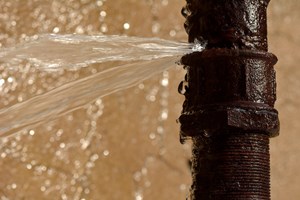Texas water infrastructure failing under growing population
(UI) — According to the Texas Tribune, water infrastructure across Texas in failing. In 2021, the state’s water system’s barley received a passing grade from the American Society of Civil Engineers, and the problem has only gotten worse.

Texas has lost over 30 billion gallons of water because of previously fixed breaks in water lines, according to a report from 2021 from the Texas Water Development Board. Other faults in the state’s water infrastructure account for another 100 billion gallons lost, costing the state over $266 million.
For example, residents in Zavalla, a small town in East Texas, experience frequent line breaks due to the town’s aging water infrastructure. In fact, the deteriorating system left the town without drinking water for 10 days over Christmas in 2022.
While agencies must perform water audits if they receive money from the water board or have over 3,000 connections, many local regulatory bodies fail to report accurate data. This means that the amount of water loss is likely much greater.
Failing water infrastructure is worse in rural communities with older pipes, some of which date back to the late 1800s. Texas’ rapid population growth only adds pressure to the state’s water resources.
Communities across Texas issued 3,866 boil-water notices in 2021, the highest number in the last 1- years, according to the Texas Commission on Environmental Quality. While the numbers from 2022 dropped, the first three months of 2023 have seen 759 boil-water notices.
However, Texas lawmakers have the chance to address these problems at the end of the legislative session. The state will receive roughly $2.5 billion in federal funding to correct water infrastructure through the Biden administration’s Infrastructure Investment and Jobs Act.
In fact, state officials have already jumped into action. Texas senators approved legislation aimed at paying for water infrastructure upgrades. Still, the state needs over $61 billion of investments over the next 20 years, according to the EPA’s national survey.
This story was originally reported by the Texas Tribune.
Related News
From Archive

- Glenfarne Alaska LNG targets late-2026 construction start for 807-mile pipeline project
- U.S. water reuse boom to fuel $47 billion in infrastructure spending through 2035
- $2.3 billion approved to construct 236-mile Texas-to-Gulf gas pipeline
- Major water pipe break in Puerto Rico hits over 165,000 customers
- Potomac River Tunnel project enters construction phase beneath Washington, D.C.
- Pennsylvania American Water launches interactive map to identify, replace lead water service lines
- Trump's tariffs drive $33 million cost increase for Cincinnati sewer project
- Utah city launches historic $70 million tunnel project using box jacking under active rail line
- Tulsa residents warned after sewer lines damaged by boring work
- Fatal trench collapse halts sewer construction in Massachusetts; two workers hospitalized



Comments